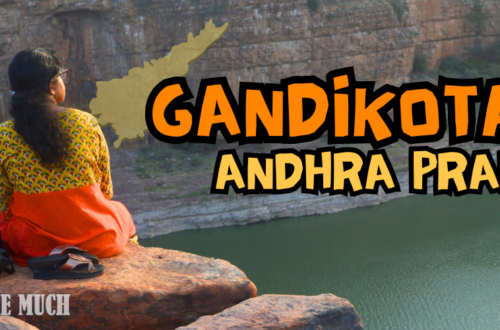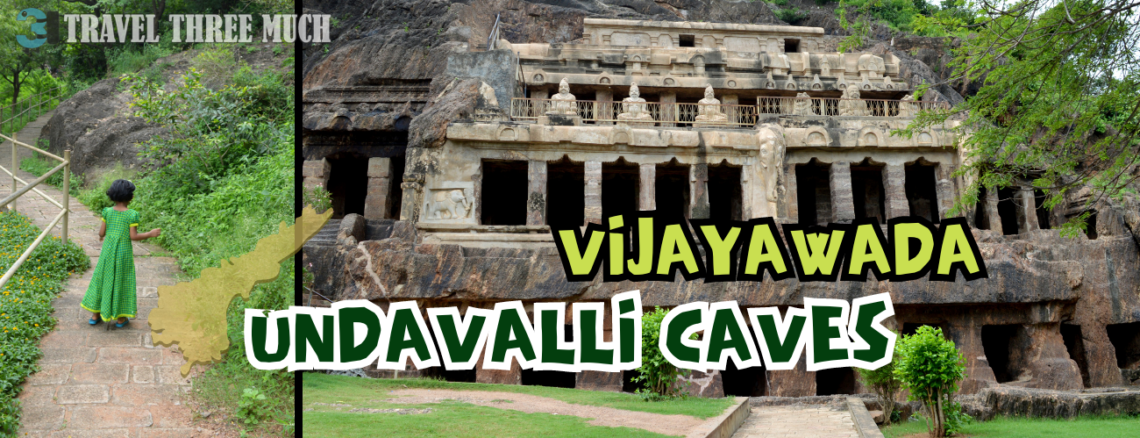
Undavalli Caves: A Blend of History, Culture, and Craftsmanship
In September 2019, my family and I embarked on a journey to the beautiful city of Vijayawada, situated in the heart of Andhra Pradesh, India.
Our visit was marked by a stay at the Bhavani Island Resort, run by the Andhra Pradesh Tourism Development Corporation (APTDC), which offered a tranquil retreat in the midst of nature. One of the highlights of our trip was the exploration of the Undavalli Caves, a remarkable rock-cut temple complex perched on a hillside.
Undavalli caves – History
The caves, believed to have their construction initiated in the 6th or 7th century AD, have a rich history of royal patronage that continued until the 16th century AD.
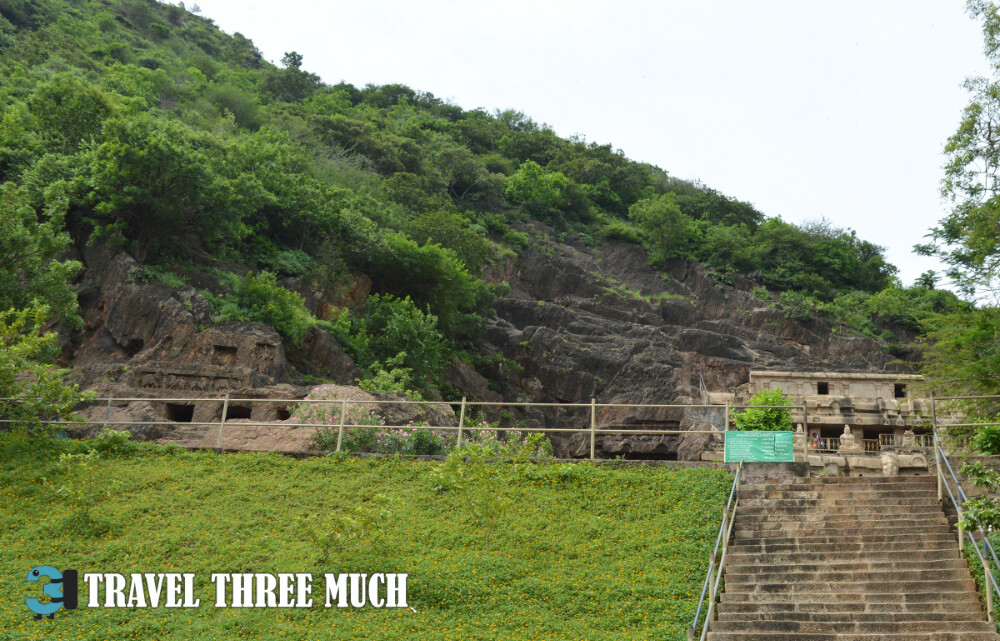
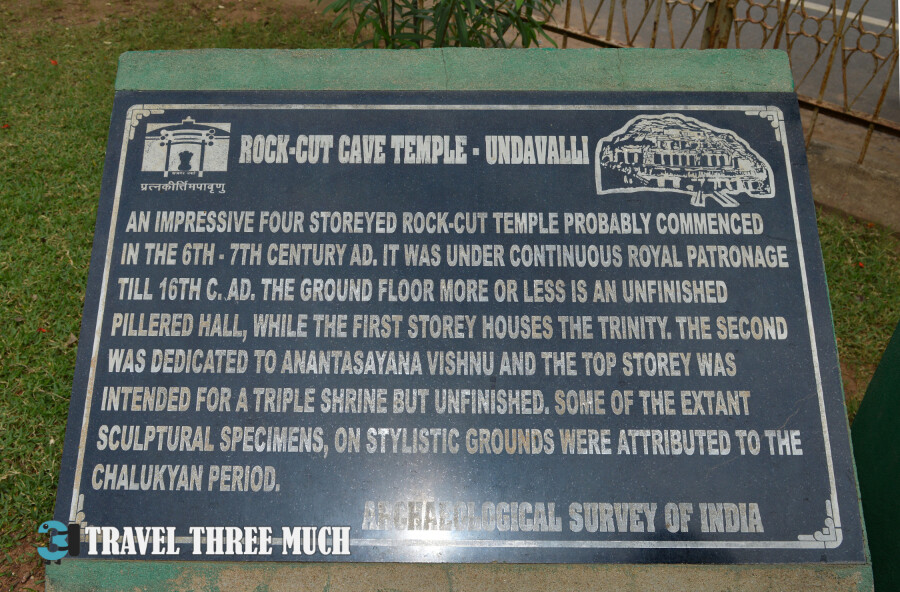
The Undavalli Caves represent a magnificent piece of architectural and sculptural heritage. Nestled amidst lush greenery, these rock-cut caves are a testament to the artistic and architectural prowess of their creators. As we ascended the hillside to reach the caves, the panoramic views of a tributary of the Krishna River and the surrounding landscape added to the anticipation of what lay ahead.

Getting around
Upon entering the cave complex, we found ourselves on the ground floor, a spartan yet captivating pillared hall. The simplicity of the ground floor’s design was juxtaposed with the intricate carvings and artwork found throughout the complex. The pillars supported the weight of history, with hints of a story from the past.
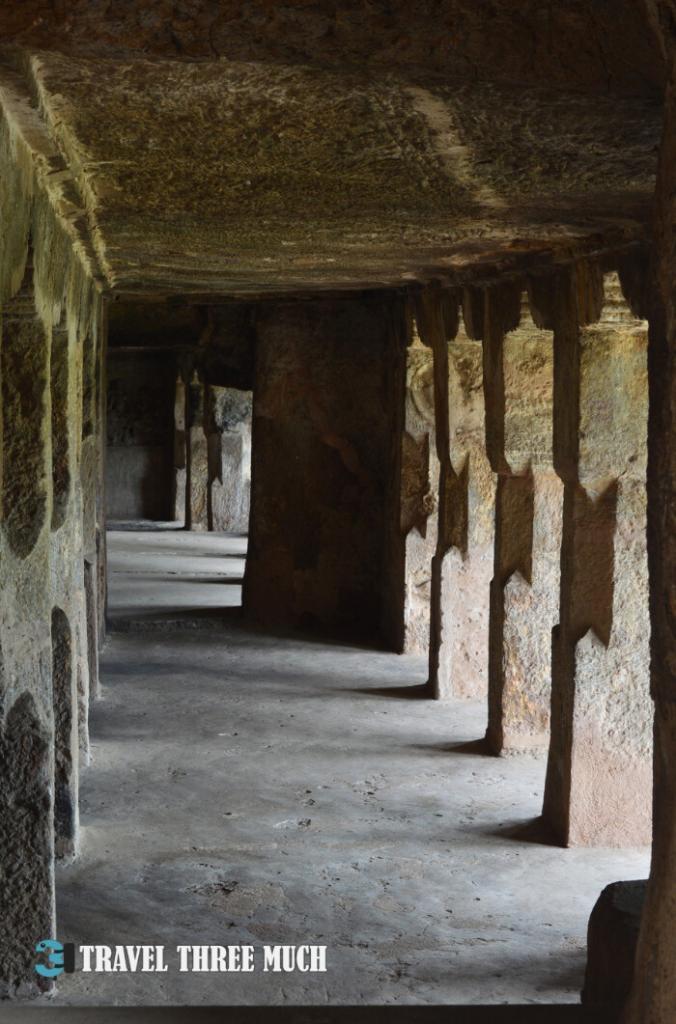
The first floor of the Undavalli Caves is where one encounters the divine trinity of Brahma, Vishnu, and Shiva, the principal deities of Hinduism. The presence of these deities in the cave is a testament to the religious significance of the site. The sculptures of Brahma, Vishnu, and Shiva are exquisitely detailed. The artistry of these sculptures is truly breathtaking.
As we explored further, we noticed an intriguing elephant head on the outside, which hinted at the cultural influences that shaped the caves over the centuries.
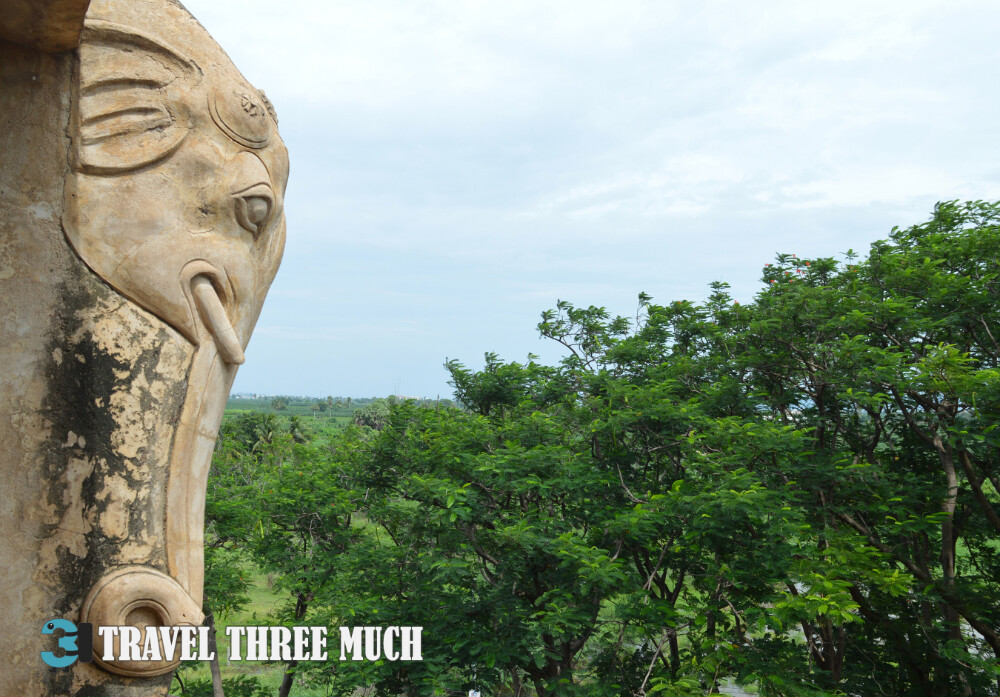
We also spotted a ‘varaha,’ or boar motif, associated with the Chalukyas and later, the Hoysalas, suggesting the interplay of different dynasties in the cave’s history.
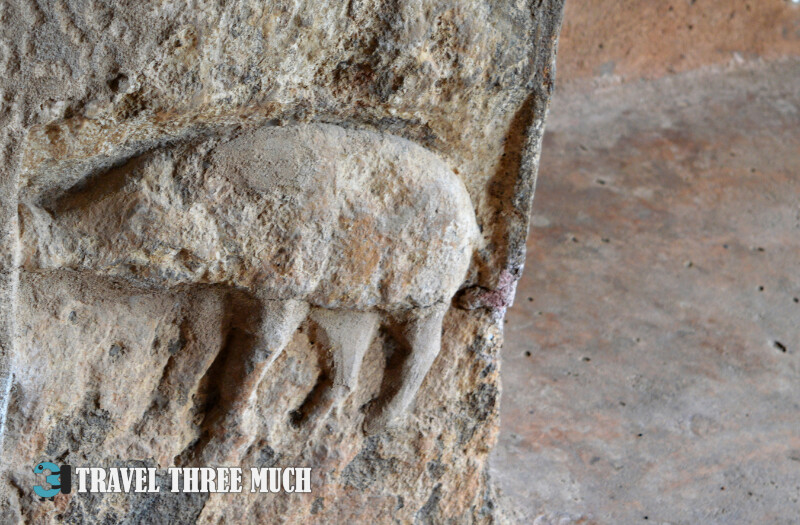
The second floor of the Undavalli Caves presents a change of pace and theme. Here, we encountered a series of statues depicting three ascetics in a seated position, each immersed in deep meditation. These ascetics exude an aura of serenity and spiritual devotion, and their presence creates a sense of tranquility in the cave.
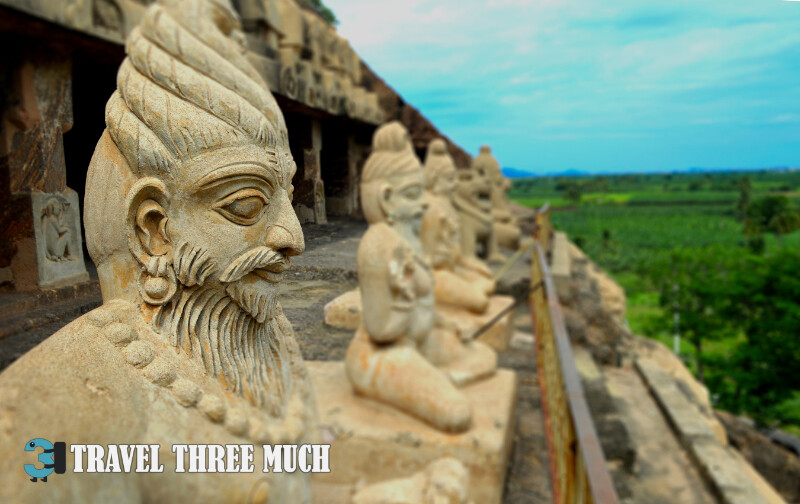
In addition to the ascetics, we were greeted by a captivating statue of an ascetic with lion statues on either side. The symbolism of the lion as a guardian and protector is prevalent in Hindu mythology.
One of the most striking features of the second floor is the colossal Anantasayana statue. This awe-inspiring sculpture depicts Lord Vishnu reclining on a bed made of the coiled body of the multi-headed serpent Adhisesha. The image of Vishnu in his cosmic sleep is a powerful representation of his role as the preserver of the universe. Although we weren’t able to capture the beauty of this sculpture since the sanctum was not open, the level of detail and craftsmanship that went into creating this masterpiece is truly remarkable.
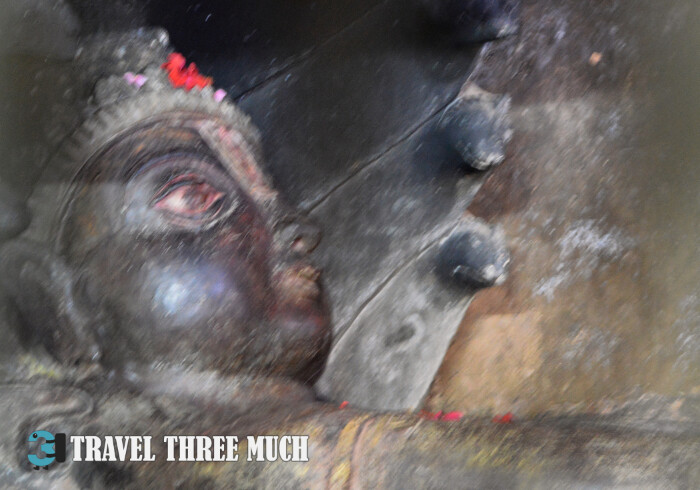
The final stop in our exploration of the Undavalli Caves was the top floor, an unfinished triple shrine. Despite its incomplete status, the top floor exudes an aura of mystery and fascination.
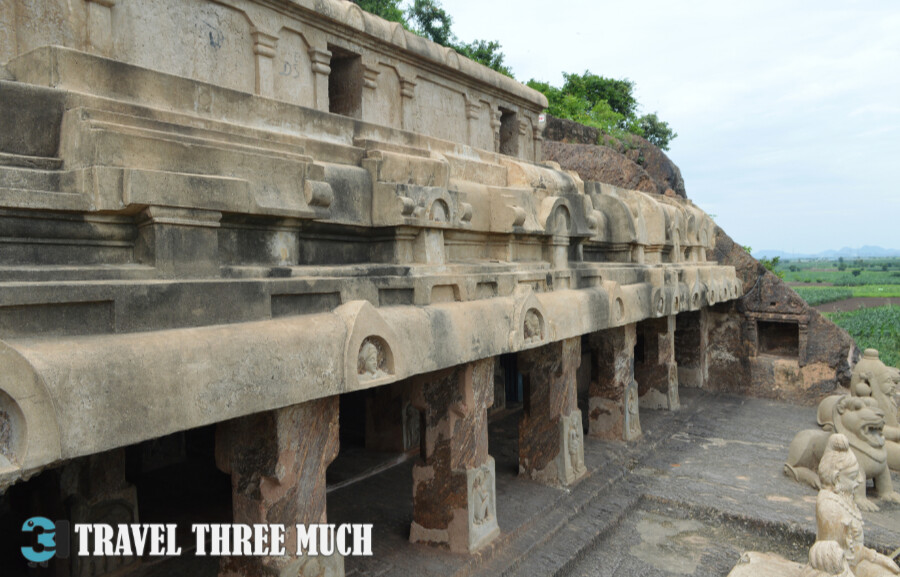
The top floor remains a puzzle for historians and archaeologists, as it is unclear why it was never completed. It is possible that shifts in patronage or political changes may have led to the project’s abandonment. Nevertheless, this enigmatic space leaves visitors with a sense of wonder and curiosity about its untold stories.
Beyond the caves
After our mesmerizing exploration of the Undavalli Caves, we took a short walk around the cave complex, absorbing the serenity and historical aura that enveloped the site. The lush greenery and the gentle rustling of leaves in the wind created a tranquil atmosphere, making it easy to imagine the bygone eras when these caves were bustling with activity and devotion.
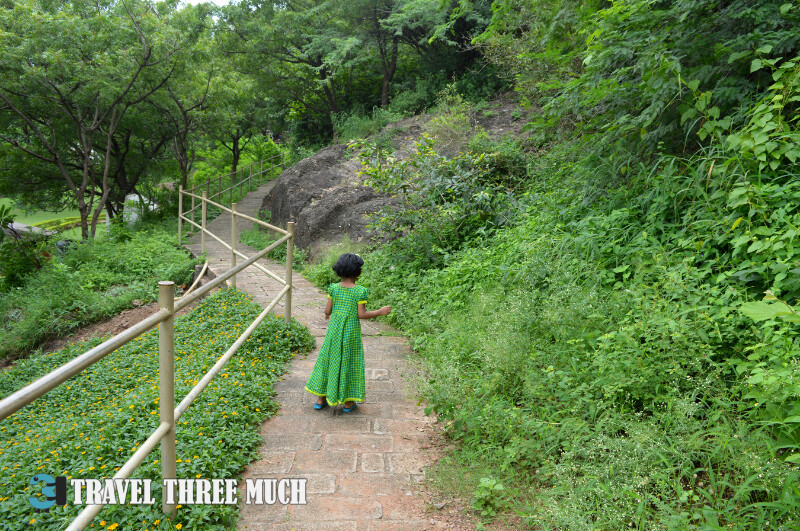
As we descended the hillside and headed back to our stay at the Bhavani Island Resort, we couldn’t help but marvel at the rich history and cultural significance of the Undavalli Caves.
The ground floor’s pillared hall, the first floor’s divine trinity, the second floor’s ascetics and serpents, and the unfinished marvel of the top floor collectively create a tapestry of art, spirituality, and mystery.
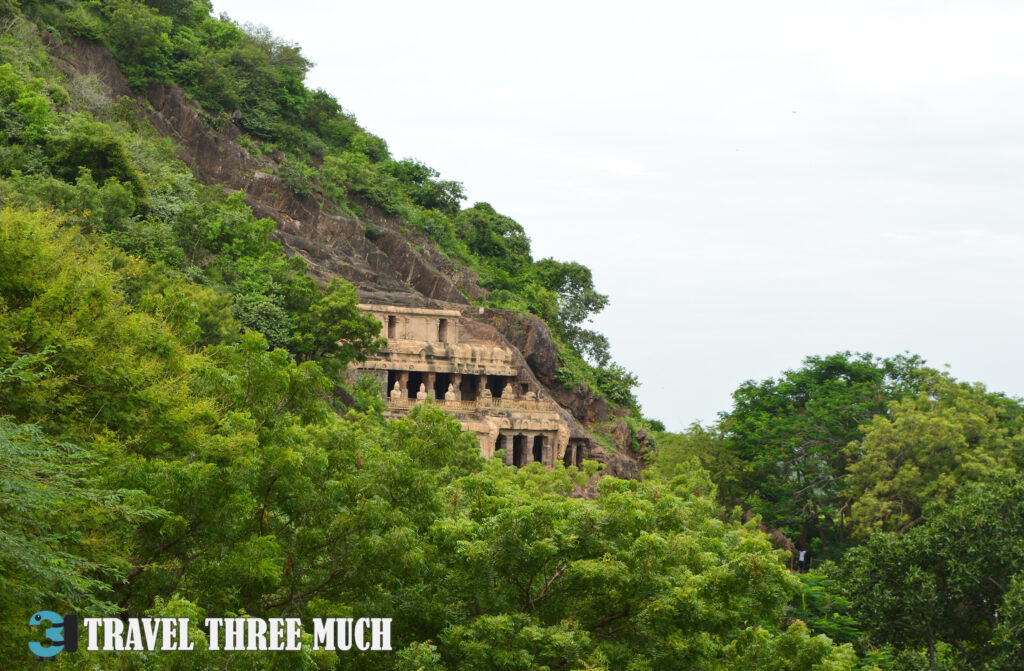
Our visit to the Undavalli Caves left us with a profound appreciation for the craftsmanship and dedication of the artisans who created this site and a sense of wonder at the stories and secrets that still linger in the caves’ unfinished spaces. If you ever find yourself in Vijayawada, make sure to include a visit to the Undavalli Caves in your itinerary. It is a journey that will not only take you through the history of India but also provide a unique spiritual and aesthetic experience.



